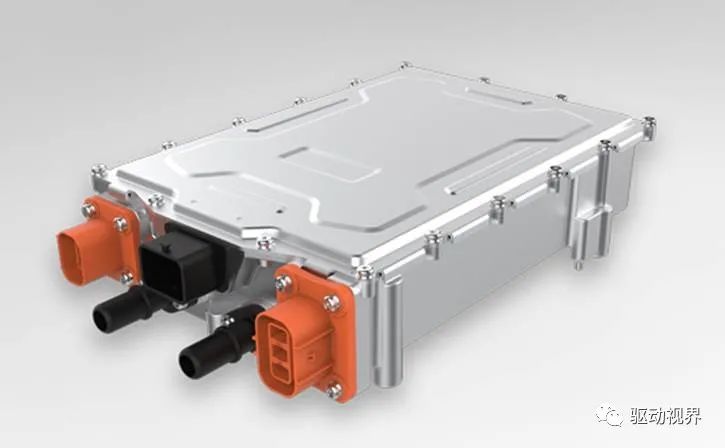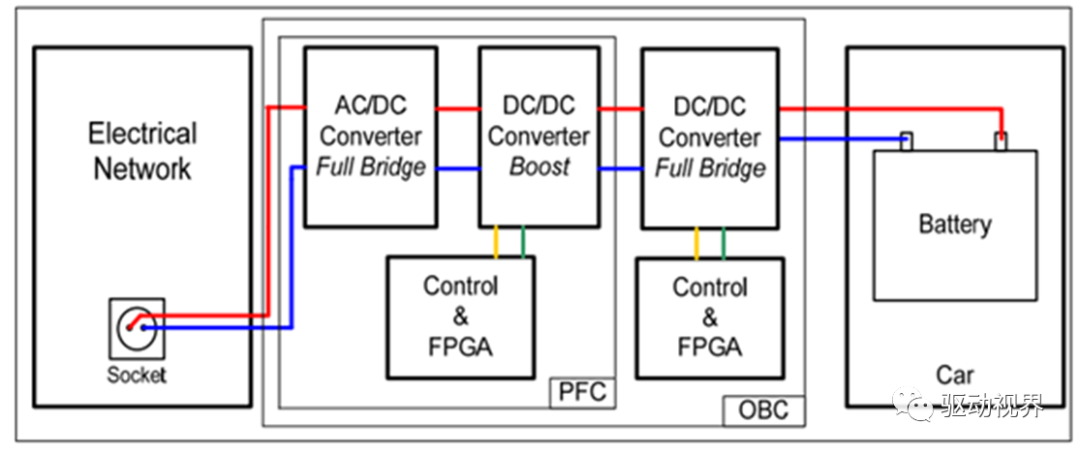Car Charger (OBC)
The on-board charger is responsible for converting alternating current to direct current to charge the power battery.
At present, low-speed electric vehicles and A00 mini electric vehicles are mainly equipped with 1.5kW and 2kW chargers, and more than A00 passenger cars are equipped with 3.3kW and 6.6kW chargers.
Most of the AC charging of commercial vehicles uses 380V three-phase industrial electricity, and the power is above 10kW.
According to the research data of Gaogong Electric Vehicle Research Institute (GGII), in 2018, the demand for new energy vehicle on-board chargers in China reached 1.220,700 sets, with a year-on-year growth rate of 50.46%.
From the perspective of its market structure, chargers with output power greater than 5kW occupy a larger share of the market, about 70%.
The main foreign enterprises producing car charger are Kesida, Emerson, Valeo, Infineon, Bosch and other enterprises and so on.
A typical OBC is mainly composed of a power circuit (core components include PFC and DC/DC) and a control circuit (as shown below).
Among them, the main function of the power circuit is to convert alternating current into stable direct current; The control circuit is mainly to achieve communication with the battery, and according to the demand to control the power drive circuit output a certain voltage and current.
Diodes and switching tubes (IGBTs, MOSFETs, etc.) are the main power semiconductor devices used in OBC.
With the application of silicon carbide power devices, the conversion efficiency of OBC can reach 96%, and the power density can reach 1.2W/cc.
The efficiency is expected to further increase to 98% in the future.
Typical topology of vehicle charger:
Air conditioning thermal management
In the refrigeration system of electric vehicle air conditioning, because there is no engine, the compressor needs to be driven by electricity, and the scroll electric compressor integrated with the drive motor and controller is widely used at present, which has high volume efficiency and low cost.
Increasing pressure is the main development direction of scroll compressors in the future.
Electric vehicle air conditioning heating is relatively more worthy of attention.
Due to the lack of an engine as a heat source, electric vehicles usually use PTC thermistors to heat the cockpit.
Although this solution is fast and automatic constant temperature, the technology is more mature, but the disadvantage is that the power consumption is large, especially in the cold environment when PTC heating may cause more than 25% of the endurance of electric vehicles.
Therefore, heat pump air conditioning technology has gradually become an alternative solution, which can save about 50% of energy than PTC heating scheme at an ambient temperature of about 0 ° C.
In terms of refrigerants, the European Union's "Automotive Air Conditioning System Directive" has promoted the development of new refrigerants for air conditioning, and the application of environmentally friendly refrigerant CO2 (R744) with GWP 0 and ODP 1 has gradually increased.
Compared with HFO-1234yf, HFC-134a and other refrigerants only at -5 degrees above have a good cooling effect, CO2 at -20℃ heating energy efficiency ratio can still reach 2, is the future of electric vehicle heat pump air conditioning energy efficiency is the best choice.
Table : Development trend of refrigerant materials
With the development of electric vehicles and the improvement of the value of thermal management system, the market space of electric vehicle thermal management is broad.
Post time: Oct-16-2023











